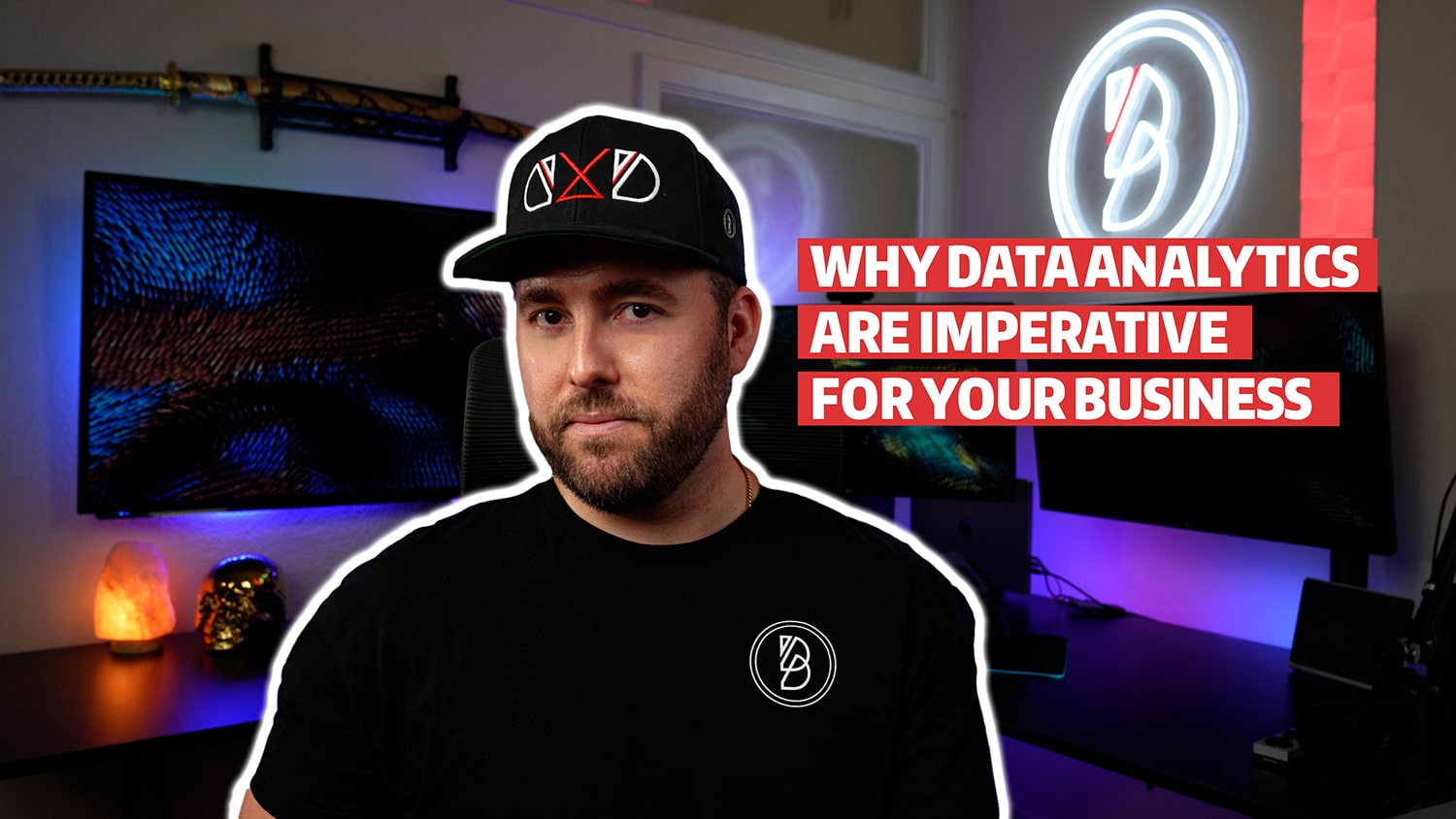Terms like big data and the internet of things (IoT) are frequently being thrown around among business experts. You may have heard of big data but don’t know why it is relevant to your business or how to make use of it.
Data is important to improving any business, maintaining a competitive edge, and ensuring you understand what your customers want and need.
Before you can use data, however, you need to understand it. That’s what big data analysis is for: it sifts through masses of information and makes sense of, organizes, and assesses it to provide valuable insights in an efficient way.
Learn more about why data analytics are not only beneficial but also imperative for your business.
What Is Data Analytics?
Data analytics describes the process of assessing raw data, gaining insights and drawing conclusions from it. It allows businesses to extract relevant patterns from large datasets with the use of analytics applications.
Examples include the open-source data analysis tools Pandas, which uses the Python programming language, and Hadoop, which are open-source programs written in Java that can process large datasets. However, even commonly used software like Microsoft Excel has helpful data analysis features.
An exploratory data analysis is used to provide an overview of the key findings within the datasets. Tools like data visualization can then help present these insights to audiences (clients/customers) in a clear way.
The last step involves using these insights to make recommendations for the next steps. This process allows organizations to make appropriate business decisions and meet the needs of their customers.
Types of Data Analytics
The four basic types of data analytics are:
- Descriptive Analytics – This illustrates changes over a specific time period. For example, descriptive analytics can show higher sales or increases/decreases in website views in a month/quarter/year.
- Predictive Analytics– Predicts what is likely to take place in the relatively near term based on previous data.
- Diagnostic Analytics – Diagnostic analytics uses past data to assess why something, like higher or lower sales, happened.
- Prescriptive Analytics – This uses historical data to recommend a specific course of action like a seasonal inventory increase of specific products.
Lastly, there is regression analysis which refers to several statistical methods that estimate relationships between dependent and independent variables. These clarify the strength of the relationship between the variables and their future relationships.
Past data is extremely useful in analytics, as it can help take proper action and make the right decisions.
For example, it can make sense of consumer demand, help businesses anticipate changes, and optimize decisions. When used correctly, data analytics can lead to more sales and profits.
However, this requires high-quality, structured data and good data management.
Benefits of Data Analytics
By now, it’s probably clear to you why data analytics are beneficial to your business, but if not, here are some of its key benefits:
- Enhanced Decision-Making – Data analytics provides companies with a comprehensive assessment of their customers, which is essential to making better business decisions and improving project management.
- More Efficiency – Using data analytics, businesses can also streamline their processes which helps them cut costs and makes them more efficient. It allows them to properly analyze their finances which can help them spend money in marketing and other departments more efficiently.
- Better Marketing – Since data analytics helps organizations get to know their customers, their pain points, needs, desires, and demands, they can alter their marketing more efficiently. More precise marketing campaigns on social media and other channels can lead to more sales and profits.
- Improved Customer Service – Building on the previous point, data analytics can lead to better customer service as it provides businesses with a clear understanding of who their customers are and what they want and need. Providing your team access to your data in one key location helps ensure consistency in service quality.
How to Use Data Analytics
Big data can appear overwhelming simply due to its sheer volume. However, it doesn’t take data scientists and engineers to make use of it. Applications of data analysis can help make it practical for you and your business.
Check out our step-by-step guide on how to use data analytics:
- Have a Plan in Place – Failing to plan equals planning to fail. Therefore, prepare a long-term plan with clear objectives that takes into account your data requirements. Make sure to answer the following questions:
- Why do you want to collect a specific type of data?
- What do you hope to achieve?
- Collecting Data – After having a plan in place, decide:
- Which data sources you will use
- Which data points to focus on
- How to collect the data (social media/transaction data/GPS/RFID chips, etc.)
- Make Sure The Data is Relevant – You’ll need to do more than just gather large amounts of data. Raw data isn’t very useful and doesn’t provide much information. That’s why it’s crucial that you use quality data that is relevant.
- Use Your Data Effectively – If you plan on working with data analytics, you can hire in-house data analysts/specialists. If you run a small company, this may not be possible. Either way, think about which data sources and metrics you will use for your purposes to make sure your data is used effectively.
- Data Presentation – Once you’ve gathered data and analyzed it, it’s time to present it. Data visualization tools like Tableau allow you to demonstrate your findings in clear ways through graphs and charts. Through these easy-to-understand infographics, your audience can better understand your findings in webinars, video tutorials and on social media.
- Taking Action – The purpose of data analytics is to help you understand certain trends and help you make better business decisions. Once you have gathered your findings, you can put them to practical use with a well-thought-out action plan that can serve as a guide for improvement. Perhaps you have to work on your services or use new channels to reach your target audience, whatever insights you gain from your data analysis, it’s important you take appropriate action.
Data Analytics Tools
Nowadays, businesses have access to a variety of data analytics technologies, with more being developed regularly. Here are some of the most popular data analytics tools available:
- Predictive Analytics – As mentioned earlier, predictiveanalytics forecast what is likely to take place in the relatively near term based on historical data. It uses statistical algorithms and machine learning to help businesses gain a clearer understanding of future outcomes which allows them to better prepare and make adjustments where necessary.
- Data Warehouse – Data warehouse is a management system that simplifies data analytics and other business intelligence processes. If you use this tool, you can easily centralize data from different sources, which makes it more manageable and easier to use. It also allows your data analysts to create a historical record for future comparisons.
- Machine Learning – Machine learning is a form of artificial intelligence (AI) that simulates human intelligence to complete certain tasks. It uses applications to assess data and learn from it over a period of time to make continually more accurate predictions on future outcomes.
- Data Management – Before you can use your data analytics findings effectively, you need to employ proper data management. Use analytics tools and processes to organize and manage the flow of data and ensure that the data you use is high-quality and easy to access whenever necessary.
Final Thoughts
Big data is more than just a buzzword. It’s being used by corporate giants around the world to improve their services, create better customer experiences and increase their sales to benefit their bottom lines.
Whether Tesla, Nintendo, Spotify, or Amazon, retail, travel, hospitality, or healthcare, data analytics is widely used by most companies and across all sectors.
The insights gained from data analytics help organizations understand what their customers want, what problems they have, and how to solve them more efficiently.
Ultimately, a happy customer leads to a more successful business.
If you haven’t yet caught on to the trend, it’s definitely time to do so. Your competitors are probably already using data analytics and not keeping up may cause you to fall behind.
While you may not have the same resources as global companies, there’s no need to worry: start by collecting as much data as possible and work with the tools outlined above or with small business data specialists that can help you make sense of it.
As a result, you’ll have a better understanding of how to promote your products, manage your finances, engage with your customers, and more.
Data analytics provides you with valuable insights that lead to actionable steps for driving revenue, reducing costs, and improving your customer experience.
You may find that leveraging the opportunities offered by data analytics will not only help you maintain a competitive advantage but also be the key to your overall business success.

